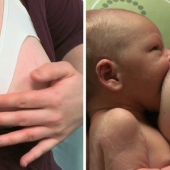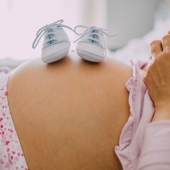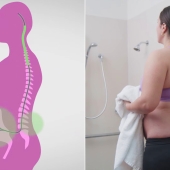There are three stages of labour. The first stage is when your cervix is opening and your baby is moving down the birth canal. The second stage is when your baby is being born and the third stage is when the placenta is delivered.
The First Stage of Labour
The first stage of labour consists of early labour, active labour and the transitional stage – early labour is where your cervix begins to prepare for giving birth by thinning out and shortening. It will also shift position so that it’s pointing more towards your front, moving from a position which was slightly towards your back.
The Second Stage of Labour
The second stage of labour is when your baby makes their entrance into the world. You’ll be 'fully dilated', in other words, your cervix would have completely opened and you will be ready to push your baby out.
Your midwives will help you find the most comfortable position to deliver in – this could be sitting, kneeling, or leaning over a birthing ball. This stage can last anywhere between a few minutes to a couple of hours but if you’ve had a baby before it’s likely to take less time.
With each contraction you’ll feel the baby’s head lower down in your pelvis and likely feel the urge to bear down and push. Each time you have a contraction and push, your baby will move slightly further down your pelvis, and you’ll be one step closer to them!
Towards the end, as your baby's head is emerging, your midwife will encourage you to pant rather than push. Once your baby's head is out, the rest of the body will follow with the next contraction. You've done it. Congratulations you’re a mum!
The Third Stage of Labour
Now that you are holding your newborn and having amazing skin to skin contact, you might think it's all over – but there is one final stage left – delivering the placenta.
You may have a few minutes to rest before your contractions start again and you may feel the urge to push as the placenta peels away from the wall of your uterus. Once the placenta and membranes are out, your midwife will likely examine it to ensure nothing has been left behind.
They will also check your stomach to see if the uterus is contracting to stem the bleeding from where the placenta peeled away.
Your midwife can give you an injection to speed up the delivery of the afterbirth, although some mums prefer to deliver it naturally. Your midwife can discuss the pros and cons of both options with you, perhaps when you write your birth plan.
- 57 views













